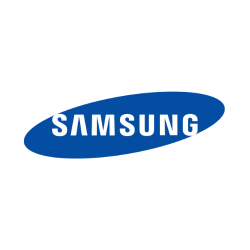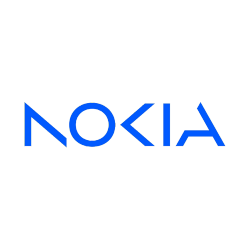
Network Technology
The LG Optimus M+ MS695 supports CDMA/EVDO technology, making it compatible with CDMA networks. It operates on 2G bands CDMA 800/1900 and 3G bands CDMA2000 1xEV-DO. The device offers a speed of CDMA2000 1x, delivering up to 153 Kbps. While these specifications might seem basic by today's standards, they were quite standard for smartphones released in the early 2010s.
Launch Details
The LG Optimus M+ was announced in March 2012 and released in April of the same year. The device has since been discontinued, which is common in the fast-paced world of smartphone technology where newer models frequently replace older ones.
Body and Design
The device features dimensions of 113.8 x 62.7 x 9.9 mm and weighs 119 g (4.20 oz), making it compact and lightweight. The phone uses a Mini-SIM and is constructed to fit comfortably in the user's hand, which is particularly appealing to those preferring smaller devices. The build quality was designed to be sturdy, suitable for daily use without worrying about excessive wear and tear.
Display Characteristics
The LG Optimus M+ sports a 3.5-inch TFT display capable of displaying 256K colors. With a screen resolution of 320 x 480 pixels at a 3:2 ratio and approximately 165 ppi density, the screen size and resolution were moderate for its time. Although not as vibrant or sharp as modern displays, it was sufficient for basic viewing tasks such as browsing and multimedia consumption.
Platform and Performance
Running on Android 2.3 (Gingerbread), the device is powered by the Qualcomm MSM7627A Snapdragon S1 chipset. The CPU is an 800 MHz Cortex A5, paired with an Adreno 200 GPU, enabling it to handle basic applications and tasks. While not suitable for heavy multitasking or high-end gaming, this configuration was typical for mid-range devices in 2012.
Memory and Storage
The LG Optimus M+ comes with 512MB of RAM and 4GB of internal storage. For users needing additional space, the phone includes a dedicated microSDHC card slot, allowing for expandable storage. Although limited by modern standards, the memory was sufficient for essential apps and a modest amount of media storage during its time.
Camera Capabilities
The device is equipped with a 5 MP rear camera with autofocus and an LED flash. It can capture video at 480p resolution. Though lacking a front-facing camera, the rear camera was capable of taking decent photos in well-lit conditions, suitable for casual photography.
Audio and Sound
The LG Optimus M+ includes a loudspeaker for hands-free calls and media playback. It also retains a 3.5mm headphone jack, a feature increasingly rare in modern smartphones but appreciated by users who prefer wired audio solutions.
Communication Features
Connectivity options include Wi-Fi 802.11 b/g/n with hotspot capabilities, Bluetooth 3.0 with A2DP for wireless audio, GPS with A-GPS for navigation, and microUSB 2.0 for charging and data transfer. These features ensured that the device was well-suited for typical communication needs at the time.
Sensors and Additional Features
The LG Optimus M+ includes essential sensors such as an accelerometer, proximity sensor, and compass. These sensors contributed to the user experience by enhancing functionality such as screen rotation, call handling, and navigation.
Battery Life
The device is powered by a removable 1300 mAh Li-Ion battery. It offers up to 250 hours of stand-by time and up to 4 hours of talk time. Although relatively modest, the battery was sufficient to provide a full day's use with careful management, typical of smartphones from that period.
Miscellaneous Information
The phone was released in a black color variant. It had SAR ratings of 1.11 W/kg (head) and 0.71 W/kg (body), indicating compliance with international safety standards for radiation emission. Upon release, the LG Optimus M+ was priced at approximately 100 EUR, placing it within an accessible price range for many consumers.
Key Features of LG Optimus M+ MS695
- Compact Design: Dimensions of 113.8 x 62.7 x 9.9 mm and lightweight at 119 g.
- Display: 3.5-inch TFT screen with a resolution of 320 x 480 pixels.
- Operating System: Powered by Android 2.3 (Gingerbread).
- Processor: Equipped with an 800 MHz Cortex A5 CPU and Adreno 200 GPU.
- Camera: 5 MP main camera with autofocus and LED flash.
- Storage: 4 GB internal storage with 512 MB RAM and microSDHC support for expansion.
- Connectivity: Features Wi-Fi, Bluetooth 3.0, GPS, A-GPS, and microUSB 2.0.
- Audio: Includes a 3.5mm headphone jack and loudspeaker.
- Sensors: Comes with an accelerometer, proximity sensor, and compass.
- Battery: Removable 1300 mAh Li-Ion battery offering up to 250 hours standby time.
- Affordable: Originally priced at around 100 EUR.
LG Optimus M+ MS695 Key Disadvantages
- No support for 4G LTE networks, which limits internet speed capabilities.
- Outdated Android 2.3 (Gingerbread) operating system, lacking modern app compatibility and security updates.
- Low display resolution at 320 x 480 pixels, resulting in a less sharp viewing experience.
- Limited processing power with an 800 MHz Cortex A5 CPU, which may lead to lag during multitasking or running demanding apps.
- Only 512MB of RAM, which is inadequate for modern app performance standards.
- Lacks a front-facing camera for selfies or video calls.
- No FM radio feature included.
- Low battery capacity of 1300 mAh, leading to shorter battery life compared to current smartphones.
- Discontinued status, meaning it is no longer supported or sold by the manufacturer.

View Also
More Phones
All Rights Reserved +14038 Phones © Mobilawy 2025

























